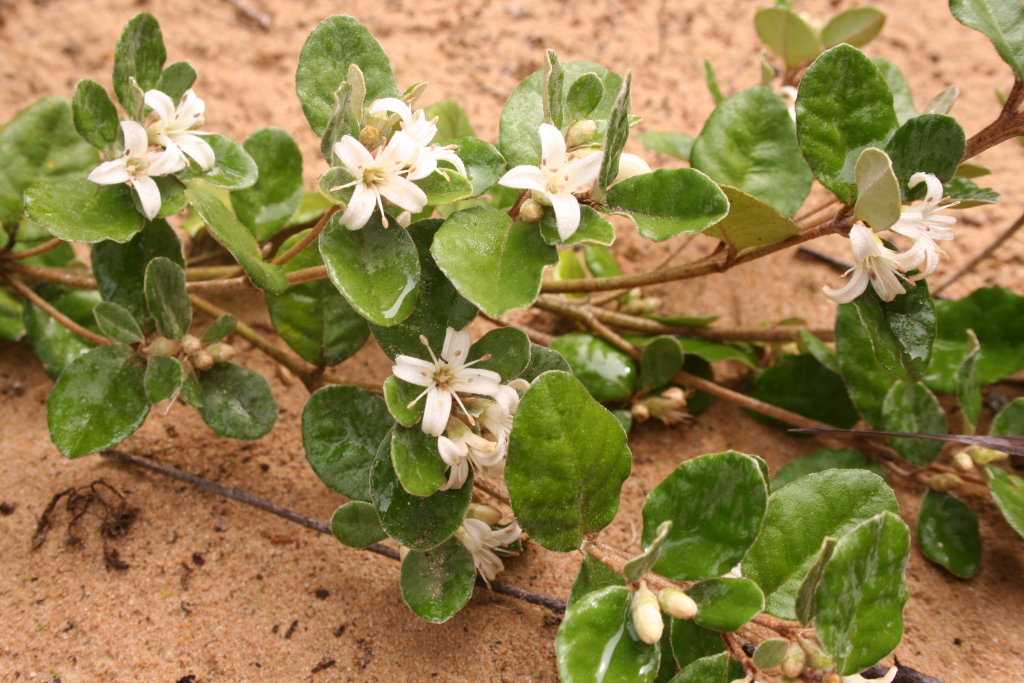Correa alba var. alba
Procumbent to spreading shrub to 1.5 high; branchlets smooth. Leaves coriaceous, elliptic to orbicular, 8–35 mm long, 6–25 mm wide, sparsely tomentose or glabrous above, densely tomentose beneath, margin entire, flat. Inflorescence 1–5-flowered, terminal on short branchlets; pedicels 0.5–5 mm long, tomentose; bracteoles basal, linear to spathulate, 1–5 mm long, deciduous. Flowers not pendent; calyx hemispherical, 2–4 mm long, truncate to 4-dentate or broadly lobed, fawn-tomentose; corolla c. campanulate, c. 12 mm long, petals soon free and spreading, white (rarely pink), tomentose outside; stamens included, filaments broadened at base.
VVP, GipP, OtP, EGL, WPro, OtR, Strz. Also NSW, Tas.
A common species of coastal closed heath and woodland, rarely far from the coast, but an isolated population occurs on limestone cliffs of the Mitchell River near Bairnsdale. Hybrids between C. alba and other Correa species are common, e.g. populations to the west of Port Phillip Bay (see notes under C. reflexa). Some populations east of Portland, and from the Otway Range to the west of Port Phillip Bay are intermediate between the 2 recognised varieties.
Duretto, M.F. (1999). Rutaceae. In: Walsh, N.G.; Entwisle, T.J., Flora of Victoria Vol. 4, Cornaceae to Asteraceae, pp. 153–197. Inkata Press, Melbourne.
 Spinning
Spinning

